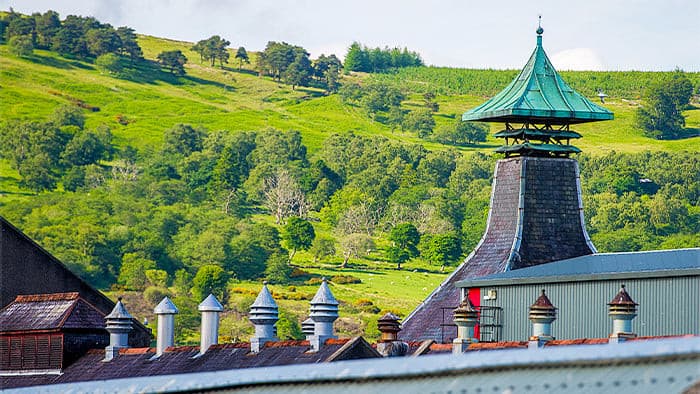Situated in the eastern Scottish Highlands, just outside the region of Speyside, lies a transformative whisky distillery known by few but loved by all who do. Established in the Scotch distillery boom of the late 19th century, this traditional Highland distillery is coveted by malt whisky enthusiasts for its use of lightly peated malt.
Peated whisky is, for the most part, a love-it-or-hate-it affair. Some covet the intensely rich and peppery, often tar-like characteristics of peat smoke, others simply cannot stand the thought of it. What I and so many Society members before me have come to appreciate about Distillery 66, however, is that it serves as a common ground for both the die-hard peatheads of the world and the Speyside loyalists who struggle to find any real enjoyment in something that tastes like, well, an ashtray doused in saltwater.
You see the whisky produced at this Highland distillery is fundamentally different from the more common smoke bombs from Islay. Not only is the barley peated to a very low level (approximately 15 ppm), the peat itself is cut from the Scottish mainland, far from the coastline. When burned, mainland peat produced a much cleaner, colder woodsmoke characteristic that is much gentler than the hot and heavy, often medicinal flavour of the more common Islay peat. The result is a much lighter, more approachable spirit that with a bit of time and patience, can be enjoyed by almost anyone.
Much of the whisky produced at Distillery 66 is reserved for blended Scotch whisky. Today, however, we are fortunate to have three single cask, single malt expressions that showcase the uniqueness of this lightly peated spirit.
Cask 66.131 ‘Full steam ahead’
Our first step into the lightly peated casks of Distillery 66 is a fresh and welcoming 12-year-old spirit that delivers notes of freshly cut grass, white peppercorn and coal dust. The smoke is present at first but after a few moments it dissipates into the background, making way for burnt carrots and parsnips. At 57.6% the spirit is certainly a lively one but a dash of water will calm the whisky and bring forward a wave of sweetness.
Not only has this whisky been matured for the same amount of time and bottled at a similar strength, it happens to have been distilled on the same date. While near identical on paper, however, this spirit is slightly less sweet and far more earthy in characteristic. Notes of burning heather, crispy bacon, lemongrass and dried hay are in perfect harmony with a thin layer of peat smoke. While the saltwater and brine notes commonly found in Islay whisky is absent from this spirit, it is more intensely flavoured than the sister cask before it.
Cask 66.138 ‘Deep, rich and burnt fruit’
We know that when compared to Islay, mainland peat will produce a more approachable flavour profile. Another factor that can contribute the approachability is the amount of time the whisky was matured in oak. Cask 66.139 spent a full 20 years in a refill hogshead, which further mellows the whisky’s smoky characterstic to just a whisper, while allowing a delicate array of wild flowers and mixed herbs to shine through. This is undoubtedly the most complex of the three and certainly the most thought-provoking, a perfect display of how mainland peat evolves over two decades.
If you are curious about peat but have up until this point struggled to find enjoyment in it, give Distillery 66 a try. You may be surprised at just how transformative the experience can be.



